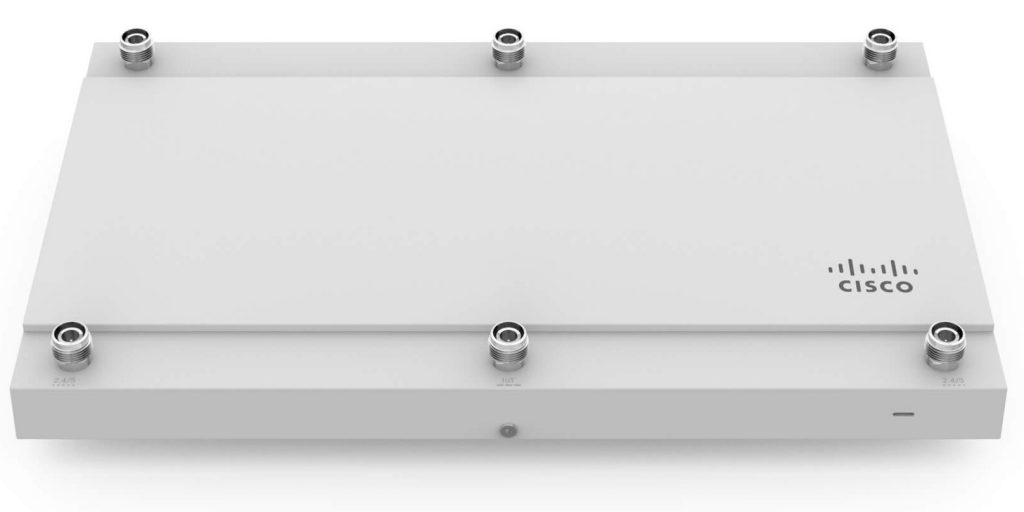
Cisco Meraki MR53E Access Point Crowd-friendly, mission-critical performance
Highlights
-
Ideal use cases
-
- Performance-critical wireless LANs
- High-density environments
- Challenging RF scenarios
- Focused coverage and flexible deployments
-
Hardware features
-
- 4 radios: 2.4 GHz, 5 GHz, dual-band WIDS/WIPS, and Bluetooth Low Energy (BLE)
- 4-stream 802.11ac Wave 2 (MU-MIMO), up to 2.5 Gbps dual aggregate frame rate
- 6 × external RP-TNC antenna connectors
- 1 × Gigabit Ethernet port
- 1 × 2.5 Gbps Multigigabit Ethernet port
- PoE: 802.3at (compatible with 802.3af)
- AC adapter available
-
Cloud management
-
- Network-wide visibility and control
- Integrated analytics, reporting, and anomaly detection across networks
- Self-provisioning for rapid deployment
- Seamless firmware updates
- Redundancy and security built into cloud architecture
-
Analytics
-
- Location analytics: measure visitor capture rate, visit length, and repeat visit rate over time and across sites
- Real-time and historical AP event data across radios
- Global L7 traffic analytics reporting per device, network, and application
-
Enterprise security
-
- 802.1X and native Active Directory integration
- Air Marshal: real-time WIPS with forensics
- Stateful Layer 3-7 firewall
- Identity-based group policies
- Built-in antivirus scan (NAC)
-
Guest access
-
- 1-click secure guest access
- Guest isolation firewall
- Customizable splash pages
- Integrated Facebook and Google login
- Cisco ISE integration for guest access and BYOD posturing
-
RF optimization
-
- Dual-concurrent radios with MU-MIMO support
- Radios optimized for rate-vs-range performance
- Third radio dedicated to security and RF management
- Built-in real-time RF spectrum view
- Cloud-based automatic RF optimization
-
Layer 7 traffic shaping
-
- Classifies hundreds of applications
- Create per-application bandwidth limits
- Prioritize productivity apps
- Restrict or block recreational traffic
-
Device management
-
- Create device-specific firewall rules
- Monitor and track device inventory
- Deploy applications and enforce security settings
- Enterprise Mobility Management (EMM) and Mobility Device Management (MDM)
